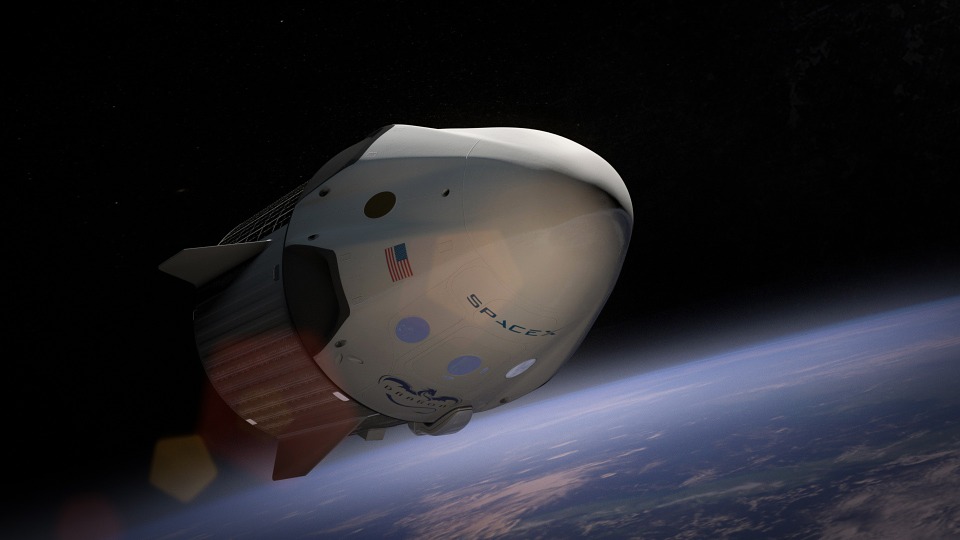Although the actual chances of an asteroid striking Earth are very, very slim, there is still a chance that it can strike the Earth. However, tracking asteroids that can possibly collide with the planet may become a little challenging, moving forward due to the SpaceX Starlink satellites.
Express reports that astronomers are becoming concerned that the Starlink satellites may affect their surveillance of asteroids that may approach Earth or even asteroids that plan on making an unexpected visit to the planet past the atmosphere. Harvard Smithsonian Center for Astrophysics astronomer Dr. Jonathan McDowell believes that the Starlink satellites, which are designed to provide internet access all over the globe, have already impacted the search for asteroids that could cause serious damage in case of a collision.
“Although SpaceX Starlink is not yet posing a problem for spotting asteroids, it is a nuisance. But Starlink is going to be a problem in a couple of years while they put up all these satellites,” said Dr. McDowell, who then noted that there are currently 300 Starlink satellites, with about 60 more satellites launching in the coming days.
These are just some of the satellites under the Elon Musk-owned space program as the objective was for 12,000 satellites to be put up. Dr. McDowell noted that although 300 satellites that are currently up in the skies is a nuisance, it can still be manageable, it is when all 12,000 satellites are up in the skies that can pose a problem. The Starlink satellites pose a nuisance to astronomers due to their low orbiting distance and how many they are.
Asteroids that are close to approaching the Earth are close to the sun in the sky, which means that astronomers already have to look as close as possible. This occurs when the sun sets, but incidentally, the Starlink satellites light up around this time as well.
Speaking of tracking asteroids, astronomer Alan Harris from the German Aerospace Center revealed how space agencies all over the world track down asteroids. Harris explained that the observatories look for celestial objects that move fairly quickly against the stars because the stars do not move as they are far away. He went on to say that asteroids about to approach Earth can really be seen moving across the stars in one night.



 Astronomers have discovered another puzzling interstellar object − this third one is big, bright and fast
Astronomers have discovered another puzzling interstellar object − this third one is big, bright and fast  FDA Adds Fatal Risk Warning to J&J and Legend Biotech’s Carvykti Cancer Therapy
FDA Adds Fatal Risk Warning to J&J and Legend Biotech’s Carvykti Cancer Therapy  SpaceX Starship Explodes in Texas During Test, Citing Nitrogen Tank Failure
SpaceX Starship Explodes in Texas During Test, Citing Nitrogen Tank Failure  Is space worth the cost? Accounting experts say its value can’t be found in spreadsheets
Is space worth the cost? Accounting experts say its value can’t be found in spreadsheets  Neuralink Expands Brain Implant Trials with 12 Global Patients
Neuralink Expands Brain Implant Trials with 12 Global Patients  Eli Lilly’s Inluriyo Gains FDA Approval for Advanced Breast Cancer Treatment
Eli Lilly’s Inluriyo Gains FDA Approval for Advanced Breast Cancer Treatment  Trump and Merck KGaA Partner to Slash IVF Drug Costs and Expand Fertility Coverage
Trump and Merck KGaA Partner to Slash IVF Drug Costs and Expand Fertility Coverage  SpaceX’s Starship Completes 11th Test Flight, Paving Way for Moon and Mars Missions
SpaceX’s Starship Completes 11th Test Flight, Paving Way for Moon and Mars Missions  Lost in space: MethaneSat failed just as NZ was to take over mission control – here’s what we need to know now
Lost in space: MethaneSat failed just as NZ was to take over mission control – here’s what we need to know now  NASA Cuts Boeing Starliner Missions as SpaceX Pulls Ahead
NASA Cuts Boeing Starliner Missions as SpaceX Pulls Ahead  Trump Administration to Launch Autism Initiatives Targeting Acetaminophen Use and New Treatment Options
Trump Administration to Launch Autism Initiatives Targeting Acetaminophen Use and New Treatment Options  Tabletop particle accelerator could transform medicine and materials science
Tabletop particle accelerator could transform medicine and materials science  Cogent Biosciences Soars 120% on Breakthrough Phase 3 Results for Bezuclastinib in GIST Treatment
Cogent Biosciences Soars 120% on Breakthrough Phase 3 Results for Bezuclastinib in GIST Treatment 































